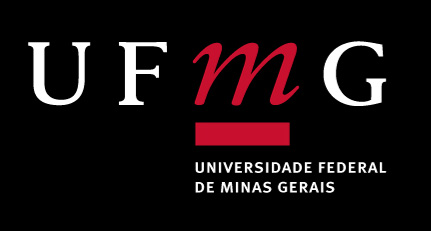Relação entre o relevo e a rede de drenagem na análise da condição de equilíbrio no alto rio Piranga (MG)
DOI:
https://doi.org/10.35699/2237-549X..13417Palabras clave:
quilíbrio geomorfológico, alto rio Piranga, Minas Gerais, declividadeResumen
A relação entre forma e processos de vertentes e de canais fluviais constitui elemento central em várias das principais teorias geomorfológicas, dada a importância do ajuste entre processos erosivos, nível de base e condições do meio no qual esse ajuste se estabelece. A declividade de canais e de vertentes determina a energia potencial necessária para que o fluxo de água realize o transporte de material no sistema fluvial. Assim, é de se esperar que em correspondência com altas declividades no terreno os gradientes dos canais também sejam elevados, enquanto vertentes com baixas declividades sejam acompanhadas de cursos d’água também de baixos gradientes. Este é o pressuposto tomado por Strahler (1950; 1977) como condição representante de situação de equilíbrio geomorfológico, considerada aqui e posta em análise junto a oito sub-bacias de 3ª ordem no alto rio Piranga em Minas Gerais. Com o objetivo de verificar a atual condição morfodinâmica da rede de drenagem em sua relação com o equilíbrio geomorfológico, foram avaliados três fatores: (i) a correlação entre declives ou gradientes dos canais e declives das vertentes nessas sub-bacias; (ii) perfis fluviais dos canais principais dessas sub-bacias e (iii) os índices de Hack (índice SL) para os canais principais e seus trechos de alto, médio e baixo curso. Os resultados demonstram a falta de correlação dos gradientes fluviais dos canais nessas sub-bacias com os declives médios das vertentes o que sugere um desajuste entre os processos de vertente e a incisão dos canais. Tal situação, corroborada pelos perfis fluviais e pelos índices de Hack, caracteriza uma situação de reorganização recente da rede de drenagem na alta bacia do rio Piranga
Referencias
AMBILI, V.; NARAYAMA, A.C. Tectonic effects on the longitudinal profiles of the Chaliyar River and its tributaries, southwest India. Geomorphology. 217, p.37-47. 2014.
BISHOP, P.; HOEY, T.B.; JANSEN, J.D; ARTZA, I.L. Knickpoint recession rate and catchment area: the case of uplifted rivers in eastern Scotland. Earth Surface Processes and Landforms. 30 (6), p.767-778, 2005.
BULL, William B. Tectonic geomorphology of mountains: a new approach to paleosismology. Blackwell Publishing. 2007.
BURBANK, Douglas W.; ANDERSON, Robert S. Tectonic Geomorphology. Blackwell Publishing. 2001.
CHEREM, L.F.S.; VARAJÃO, C.A.C.; BRAUCHER, R.; BOURLÈS, D.; SALGADO, A.A.R.; VARAJÃO, A.C. Long-term evolution of denudational escarpments in southeastern Brazil. Geomorphology. 173-174, p. 118–127. 2012.
CHEREM, Luis F.S.; VARAJÃO, César A.C.; MAGALHÃES JUNIOR, Antonio P.; SALGADO, André A.; OLIVEIRA, Letícia A.F.de.; BERTOLINI, William Z.; VARAJÃO, Angélica F.D.C. O papel das capturas fluviais na morfodinâmica das bordas interplanálticas do sudeste do Brasil. Revista Brasileira de Geomorfologia. v.14, n.4. p.299-308, 2013.
CHRISTOFOLETTI, Antonio. La noción de equilíbrio en geomorfologia fluvial. Revista de Geografía Norte Grande. 8: p.69-86. 1981.
CARSON, M.A.; KIRKBY, M.J. Hillslope form and process. Cambridge: Cambridge University Press. 1972.
DAVIS, William M. The Geographical Cycle. Geographical Journal of Royal Society. nº 14. p.481-504. 1899.
DELGADO, I. de M.; SOUZA, J.D de.; SILVA, J.C.da.; FILHO, N.C.da S.; SANTOS, R A.dos.; PEDREIRA, A.J.; GUIMARÃES, J.T.; ANGELIM, J.A.de A.; VASCONCELOS, A.M.; GOMES, I.P.; FILHO, J.V de L.; VALENTE, C.R.; PERROTTA, M.M e HEINECK, C.A. Geotectônica do Escudo Atlântico (cap. V). In: BIZZI, L.A.; SCHOBBENHAUS, C.; VIDOTTI, R.M.; GONÇALVEZ, J.H (eds). Geologia, Tectônica e Recursos Minerais do Brasil. CPRM, Brasília. 2003.
DUVALL, Alisson.; KIRBY, Eric.; BURBANK, Douglas. Tectonic and lithologic controls on bedrock channel profiles and processes in coastal California. Journal of Geophysical Research. v.109, 2004.
DYLIK, Jan. The significance of the slope in geomorphology. Bulletin de la Societé des Sciences et des Lettres de Lodz v. XIX, 3.EATON, Brett C.; CHURCH, Michael. A graded stream response relation for bed load-dominated streams. Journal of Geophysical Research. v. 109, p. 2004.
GILBERT, Karl G. Report on the Geology of Henry Mountains. U.S. Geog. And Geol. Surv., Rocky Mountain Region. 1877.
GILBERT, Karl G. The convexity of hilltops. The Journal of Geology. v.17, n.4. p.344-350. 1909.
GUEDES, Ivan C.; ETCHEBEHERE, Mario L de C.; MORALES, Norberto.; STEVAUX, José C.; SANTONI, Gisele de C. Análise morfotectônica da bacia do rio Santo Anastácio, SP, através de parâmetros fluvio-morfométricos e de registros paleossísmicos. Geociências. v.28, n.4, UNESP, São Paulo. p.247-362. 2009.
HACK, John T. Studies of longitudinal stream profiles in Virginia and Maryland. U.S. Geological Survey Professional Paper. 294B. 1957.
HACK, John T. Interpretation of erosional topography in humid temperate regions. American Journal of Science. 258A, p.80-97, 1960.
HACK, John T. Geomorphology of the Shenandoah Valley Virginia and West Virginia and Origin of the Residual Ore Deposits. U.S. Geological Survey. Professional Paper 484 Washington, U.S, 1965.
HACK, John T. Stream-profile analysis and stream-gradient index. Journal Research U.S. Geol. Survey. v.1, n.4 p.421-429, 1973.HACK, John.T. Dynamic equilibrium and landscape evolution. In: MELHORN, W.; FLEMAL, R. (eds) Theories of Landform Development (chapiter 5): Publications in Geomorphology. SUNY Binghanton, 1975.
HORTON, R.E. Erosional development of streams and their drainage basins: a hydrophysical approach to quantitative morphology. Geol Soc. Am. Bull., v.56, n.3, p.275-370, 1945.
HUDDART, D.; STOTT, T. Fluvial processes and landform – sediment assemblages. In: Earth Environments: past, present and future. Wiley-Blackwell. West Sussex, UK, 2010.
IBGE. Carta topográfica Capela Nova (MG) Folha SF-23-X-A-VI-4. Escala 1:50.000. 1976.
IBGE. Carta topográfica Senhora dos Remédios (MG) Folha SF-23-X-C-III-2. Escala 1:50.000. 1976.
KELLER, Edward A.; PINTER, Nicholas. Active tectonics: earthquakes, uplift and landscape. 2ªed. New Jersey, Prentice Hall. 362 p. 2002.
LEOPOLD, Luna. B.; MADDOCK, T. The hydraulic geometry of stream channels and some physiographic implications. U.S. Geol. Sur. Prof. Paper. 252, Washington, EUA. 1953.
LIMA, Adalto G. Índice de gradiente de canal: significados e diretrizes para aplicação. Brazilian Geographical Journal. v.4, n.2, p.680-692. 2013.
LIMA, Adalto G. Uso da relação declive-área para avaliação de interferências neotectônicas em perfil longitudinal de rio. Boletim de Geografia UEM. Maringá, v.32, n.2, p.158-172. 2014.
MACKIN, J Hoover. Concept of graded river. Bulletin of the Geological Society of America. v. 59, p.463-612. 1948.
MARENT, Breno R. Geomorfogênese dos degraus escalonados do sudeste de Minas. Instituto de Geociências da UFMG. Belo Horizonte (Tese de Doutorado). 190 p. 2016.
MELLO, Claudio L.; METELO, Cynthia M.S.; SUGUIO, Kenitiro.; KOHLER, Heinz C. Quaternary sedimentation, neotectonics and the evolution of the Doce river middle valley lake system (southeastern Brazil). Revista do Instituto Geológico. IG São Paulo 20 (1/2), p.29-36. 1999.
MONTGOMERY, David R. Slope distributions, threshold hillslopes, and steady-state topography. American Journal of Science 301, p.432–454. 2001.
PENCK, Walther. Morphological analysis of landforms. New York, St. Martin’Press. Tradução de Hella Czeck e K.C. Boswell. 1953.
PHILLIPS, Jonathan D.; LUTZ, J David. Profile convexities in bedrock and alluvial streams. Geomorphology. 102, p.554-566. 2008.
RADAM BRASIL. Mapa geomorfológico. Folha Rio de Janeiro/Vitória SF23/24. Escala 1:1.000.000. Levantamento de Recursos Naturais. v.32. Ministério das Minas e Energia. 1983.
SAADI, Allaoua. Ensaio sobre a morfotectônica de Minas Gerais: tensões intra-placa, descontinuidades crustais e morfogênese. Belo Horizonte. Instituto de Geociências – UFMG. (Tese de livre docência). 290 p. 1991.
SOUZA, Carla J. de O. Interpretação morfotectônica da bacia do rio Doce. Instituto de Geociências – UFMG. (Dissertação de mestrado). 146 p. 1995.
SEEBER, L.; GORNITZ, V. River profiles along the Himalayan Arc as indicators of active tectonics. Tectonophysics. 92 p.335-367. 1983.
SILVA, Telma M.; MONTEIRO, Hevelyn da S.; CRUZ, Marcela A.; MOURA, Josilda R da S de. Anomalias de drenagem e evolução da paisagem no médio vale do rio Paraíba do Sul (RJ/SP). Anuário do Instituto de Geociências. UFRJ, v.29 – 2. p.210-224. 2006.
STRAHLER, Arthur N. Equilibrium theory of erosional slopes approached by frequency distribution analysis. American Journal of Science. v.248, p.673-696 (Parte I) e p.800-814 (Parte II). 1950.
STRAHLER, Arthur N. Quantitative slope analysis. Bulletin of the Geological Society of America. v.67, p.571-596. 1956.
STRAHLER, Arthur N. Geografía Física. 3ªed. Ediciones Omega S.A. Barcelona. 1977.
ZANCOPÉ, Mario H de C.; PEREZ FILHO, Archimedes.; CARPI Jr. Anomalias no perfil longitudinal e migração dos meandros do Rio Mogi Guaçu. Revista Brasileira de Geomorfologia. v.10, n.1; p.31-42. 2009.
Descargas
Publicado
Número
Sección
Licencia
Derechos de autor 2017 Revista Geografias

Esta obra está bajo una licencia internacional Creative Commons Atribución 4.0.
Os artigos desta revista obedecem a licença Creative Commons — Attribution 4.0 International — CC BY 4.0









